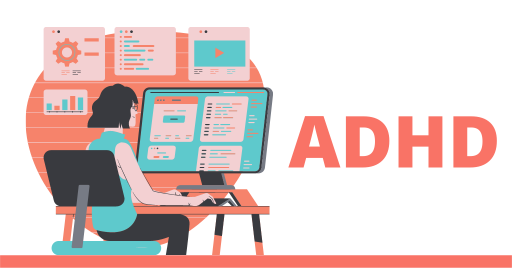
Tips for ADHD-friendly online courses

What are the elements to pay attention to in order to adapt an online course to the needs of those with attention-deficit/hyperactivity disorder?
Accessibility is one of the key features of a quality online course. This means, in fact, giving everyone the opportunity to take full advantage of virtual learning, offering courses that adapt to everyone's needs.
More and more training courses, for example, are adapting to the needs of those with Attention Deficit/Hyperactivity Disorder (ADHD). This disorder causes attention difficulties, hyperactivity and impulsivity that can create problems in communication, relationships and time management. Therefore, it is critical to create an environment that is safe and supportive of these needs.
In the article " 7 tips for ADHD-Friendly eLearning", an Instructional Designer with ADHD offers some tips for improving course accessibility for those who, like him, have this disorder. Here are the main ones:
- Linear and clear slides: ADHD causes a greater tendency to be distracted, so you need to make sure you use linear content, without too many frills. Slides are a great ally for fixing concepts. Be careful, however, not to include too many images or colors in the same slide: it's better to prefer a white background, perhaps with a summary that orders the subsequent content. Even a map of the course within the platform can be useful to provide a detailed outline of the path to be taken.
- Neat content but not boring! Those with attention-deficit/hyperactivity disorder tend to be immediately captivated by novelty and creativity. The challenge, then, is to create content that is linear and orderly but at the same time able to stimulate the creativity of learners, perhaps using both repetitive and new elements throughout the content.
- Take a cue from microlearning: this mode of e-Learning, as well as gamification, may seem the best for those with ADHD, yet this is not always the case. Once the initial excitement is over, in fact, it's possible that the learner will abandon the course and forget about it. Some elements of microlearning, however, can be useful in creating attention-deficit/hyperactivity disorder-proof courses: dividing the course into mini-sections and monitoring student performance in real time. Breaking down goals and deadlines and offering ongoing assessments of each step of the way is rewarding and allows for more control over activities.
- A reminder for breaks: among those with ADHD, there are those who tend to hyper-focus for hours on a given activity. To prevent the student from spending hours and hours on the course without resting, it is preferable to insert small reminders to take a break or to insert real 10-minute intervals to force them to momentarily "disconnect" from the activity.
- Encouragement and compliments: people with ADHD are more sensitive than others to encouragement and praise. Therefore, it can be very helpful to provide personalized feedback that includes the student's details.
- Solving real problems: those with attention-deficit/hyperactivity disorder also have great creativity and problem-solving skills that allow them to come up with innovative, out-of-the-box solutions. Because of this, they are highly stimulated by real-world scenarios and practical problem solving. This is a key element to consider when creating assessment test questions that also fit the needs of those with ADHD.
Translated with www.DeepL.com/Translator
Did you like this article? Sign up for the newsletter and receive weekly news!
Subscribe to NewsletterComments:
No comments are in yet. You be the first to comment on this article!